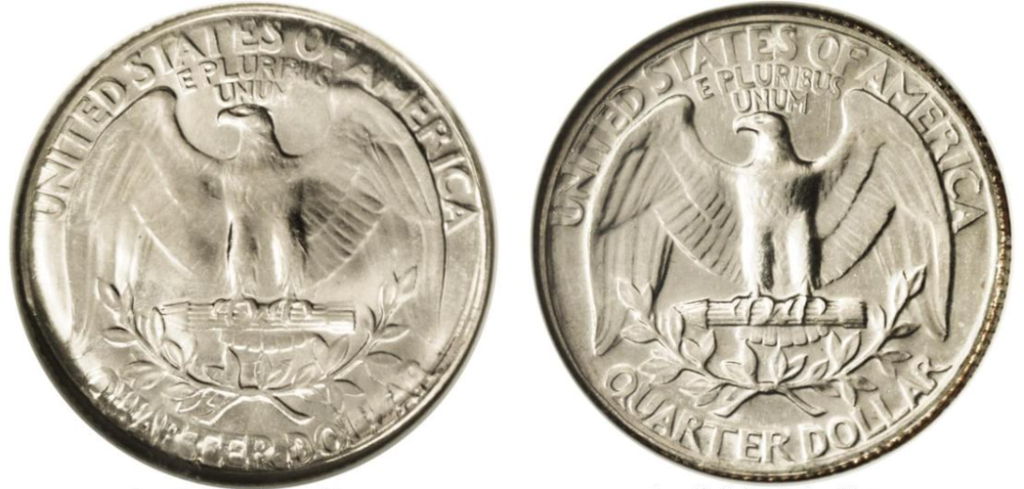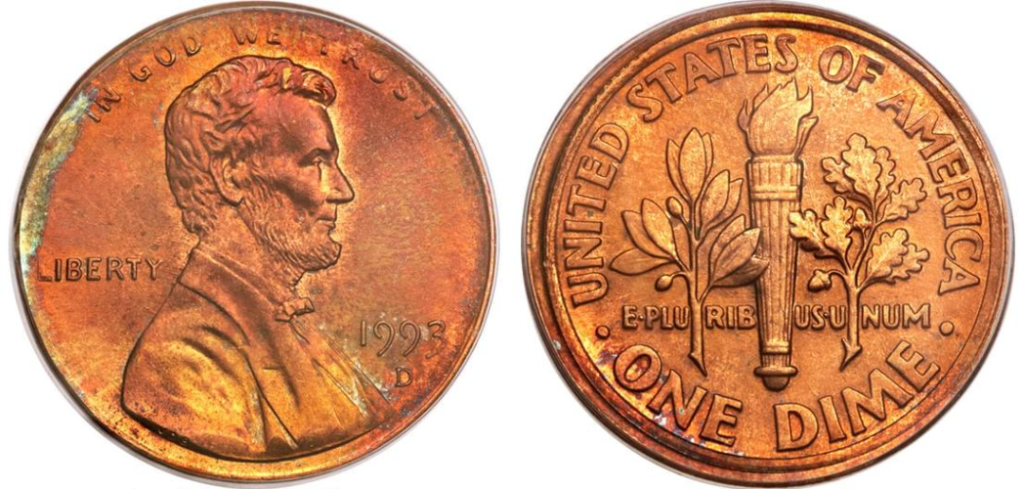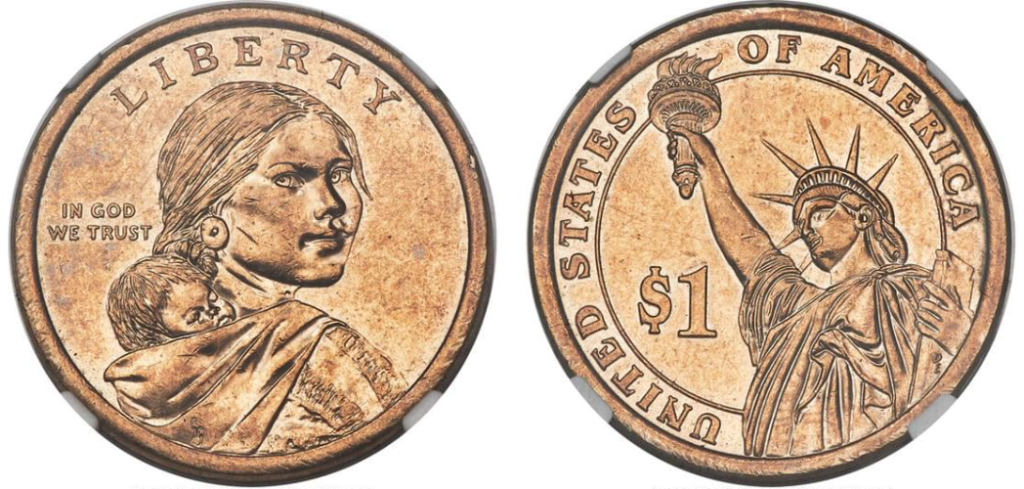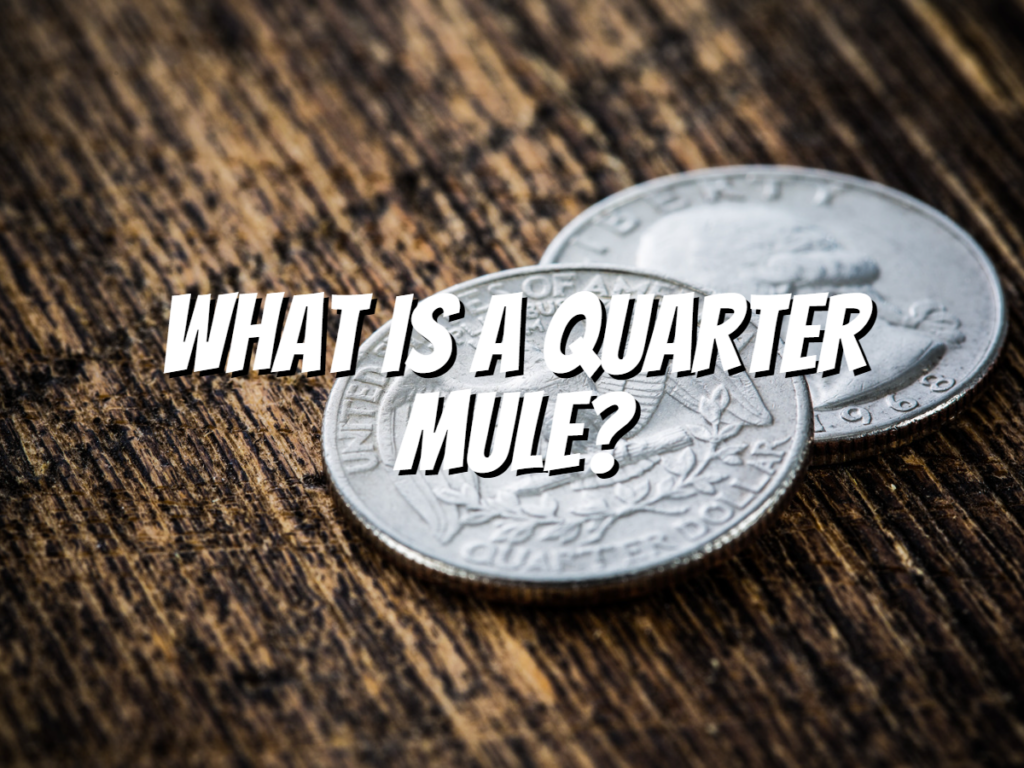When collecting coins, we encounter various coins, such as the quarter mule. But what is a quarter mule?
Today, I will discuss the history of mule coins and other related topics. What are we waiting for? Alright, let’s dive right in!
What is a Quarter Mule?

So, this coin is called the 2000 Sacagawea dollar/Washington quarter mule. It’s an error coin struck on a gold-colored dollar coin planchet.
What’s interesting about it is that it has the obverse of a Washington quarter and the reverse of a Sacagawea dollar.
According to my research, this coin is one of the earliest genuine mule coins the United States Mint ever circulated.
History of Mule Coins
Did you know that a mule is a type of coin or medal that features obverse and reverse designs not typically found on the same piece?
Intentional or erroneous production is possible. Collectors highly seek after this type of error, and it’s possible for examples to fetch high prices.
It’s interesting to note that the earliest mules can be found among ancient Greek and Roman coins.
I believe there are two main theories regarding the origin of these coins.
Some believe they were created accidentally due to a mistake in combining a new die with one that was supposed to be taken out of circulation.
Others think they were produced by counterfeiters who had stolen official mint dies, possibly during a time when they were supposed to be destroyed.
The name comes from the mule, which results from breeding a horse and a donkey.
This is because the coin has two sides meant for different coins, just like a mule has parents of two different species.
First Mule Coin
One interesting fact I found is that the U.S. Mint released one of the first authentic mule errors, which happened to be the 2000 Sacagawea dollar – Washington quarter mule.
This is different from the deliberate mules of the mid-1800s. The coin showcases the front side of a Washington quarter and the back of a Sacagawea dollar.
So, what happened was that the coin was struck on a planchet that was meant for a Sacagawea dollar.
In July 2000, they confirmed that the coin was a legitimate error. It was created by the accidental replacement of a cracked Sacagawea obverse die with a Washington obverse die.
They minted several thousand of the coins before they discovered the error. Fortunately, the Mint employees recovered and destroyed most of them.
As of May 2019, there are 18 known certified ones, and Tommy Bolack owns 14. In August 2012, a specimen was sold for $155,250!
Other Examples of Mule Coins:
Now, let’s look at other examples of mule coins sold for a lot of money! Here are some of the most expensive mule coins today!
Washington Quarter Struck with Two 25-Cent Eagle Reverse Dies

The first one on our list is this modern error that is truly remarkable.
It’s a coin that was once believed to be impossible until a similar one was found and verified a few years back.
This coin has been struck from two reverse dies, and I can confirm that the Secret Service and NGC have authenticated it.
The nickel-gray fields have a full luster and a slight reflection.
I think the first reverse (face-forward reverse in the NGC encapsulation) appears well-struck, but I noticed it’s a bit flat at the centers of the UNITED STATES OF AMERICA.
Additionally, there seems to be some minor distortion atop QUARTER DOLLAR. It seems that the other reverse was normally struck once.
Then, they struck it again with a blank planchet on top, which caused swelling and distortion. At ER DOLLAR, you can see the arc-shaped outline of the second planchet most clearly.
This particular coin was graded MS-66 and was sold for $41,975!
1993-D Lincoln Cent Struck with Dime Reverse Die

According to my observation, this lustrous Gem exhibits the traits that one would anticipate from a cent and dime mule.
As for the dime side, it features a broad and tall rim. This is because the metal was pressed into the collar of the dime die by the wider diameter cent die opposite it.
Due to the metal flow into the dime collar, the cent side has a soft strike near the rim. It’s normal for the devices to experience a strike.
As I examine the item, I notice that its surfaces are lustrous and appear pristine, except for a faint graze above the date.
Predominantly, the color is orange, with occasional shades of fire-red and olive green.
This coin was graded MS-65 and was sold for a whopping price of $51,750!
2014-D $1 Sacagawea/Presidential Dollar Mule

So, we have a 2014-D Sacagawea dollar with a reverse design meant for the Presidential dollars of that same year.
So, what happened was that one of the pressmen at the Mint accidentally chose a Presidential dollar reverse instead of the correct Native Hospitality reverse while switching out the dies on one of our presses.
The mistake was likely noticed shortly after the press resumed operation.
In this case, the Mint’s practice would have been to destroy all affected coins.
This piece seemed to slip through the cracks and make its way out of the Mint, ending up in a bag alongside regular Sacagawea dollars.
This piece was discovered in 2019 within a sack of random bank-obtained dollar coins.
This coin shows some light abrasions and signs of high-point friction, which is typical for a coin in circulation.
However, it still has a satiny luster, and the significance of the coin is much more important than its grade.
Before you go…
We hope you have learned a lot about mule coins and their history. If you learned what a Quarter Mule was before reading this article, we are sure that now you do!
Check out my next article: “How Do You Tell if a Coin is Mule?“
Related Articles:

